- What We Do
- Agriculture and Food Security
- Democracy, Human Rights and Governance
- Economic Growth and Trade
- Education
- Ending Extreme Poverty
- Environment and Global Climate Change
- Gender Equality and Women's Empowerment
- Global Health
- Water and Sanitation
- Working in Crises and Conflict
- U.S. Global Development Lab
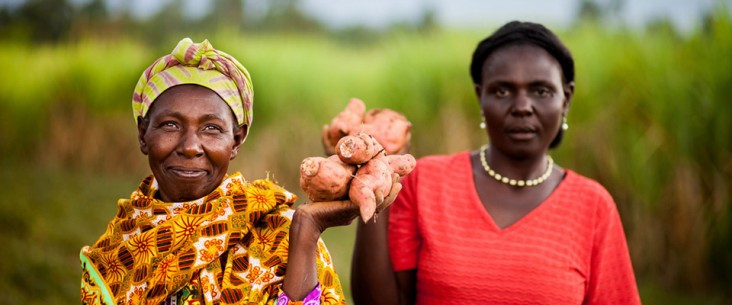
The Need for Optimal Nutrition
Nutrition plays a key role in health and wellness for all individuals. Optimal nutrition – eating the right type and amount of food in the right combinations – is a critical component of comprehensive prevention, care and treatment for individuals with HIV and AIDS. Nutrition and HIV and AIDS are cyclically related. When the body’s immune system breaks down as a result of HIV or AIDS, this can contribute to malnutrition and susceptibility to infection. These infections can result in diarrhea, malabsorption, poor appetite and weight loss. Therefore, malnutrition can contribute to and be a result of HIV disease progression. Conversely, a person who is well-nourished is more likely to maintain a stronger immune system for coping with HIV and fighting infection. Optimal nutrition is also an important component of the response to chronic diseases that are becoming increasingly prevalent among individuals with HIV and AIDS.
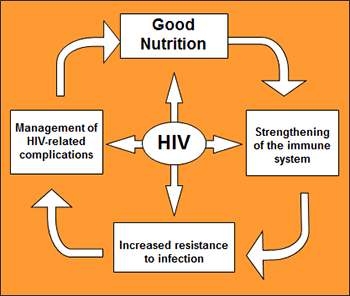
USAID’s Response
Recognizing the critical role that nutrition plays in HIV treatment, care and support, the U.S. Agency for International Development (USAID) in coordination with the U.S President’s Emergency Plan for AIDS Relief (PEPFAR) is working with a host of global partners and national governments to make provision of nutrition services a routine part of national health care systems. USAID has focused on three priority areas to achieve this goal.
Improve the capacity of health care workers to provide quality nutrition care for individuals and families
USAID is working with more than 16 countries to integrate quality nutrition assessment and counseling into health care services for all individuals. This includes provision of therapeutic and supplementary feeding when appropriate along with other types of support. This nutrition assessment, counseling and support model is known as NACS [PDF, 263KB]. Strong government leadership is essential to the success of these efforts. USAID has assisted countries to develop national nutrition strategies that guide the scale-up of nutrition services within national HIV and broader health programs. Promising outcomes from these efforts include improved nutrition status among patients as well as better adherence and retention in clinical care.
Improve HIV-free survival of infants
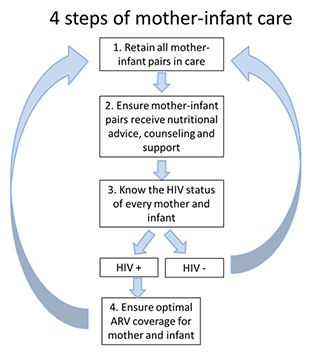
USAID nutrition teams are working with other global partners to increase the number of children who remain healthy and HIV-free through 2 years of life. Proper implementation of a nutrition assessment, counseling and support framework will assist in establishing a continuum of care that prevents mother-to-child transmission (PMTCT) of HIV and improves other critical aspects of maternal health and child survival. It also allows for emphasis of programmatic priorities outlined in the World Health Organization (WHO) PMTCT and Infant Feeding guidelines. These priorities are outlined in the four steps of mother infant care and include creating a continuum of postnatal care for mothers and infants to decrease HIV transmission and increase overall child survival and wellness.
Enhance economic security, livelihoods and food security at the household level
Addressing underlying economic and food security issues at the household level is a prominent focus of USAID nutrition programs. Services provided at clinical facilities assist in meeting the health needs of people living with HIV and AIDS. However, these facilities are not equipped to address the household economic and food security issues that are critical to the well-being and resilience of individuals and families. USAID is providing technical assistance to national governments to enhance the ability of health systems to link individuals who receive care at clinical facilities to a variety of support from community-based organizations (CBOs). These organizations link individuals and families to resources that make it possible for them improve the economic and food security within their households [PDF, 624KB].
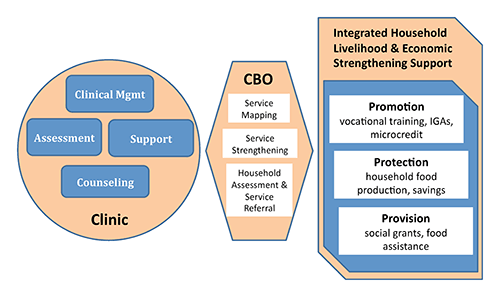
Current Programmatic Highlights
Global Fund Nutrition Toolkit: For countries applying for funding for food and nutrition programs under the Global Fund to Fight AIDS, Tuberculosis and Malaria
USAID is leading PEPFAR’s effort to collaborate with WHO, World Food Program (WFP) and the Global Fund to Fight AIDS, Tuberculosis and Malaria (Global Fund) to strengthen nutrition assessment, counseling and support elements of Global Fund proposals at the country level. The creation of the Global Fund Toolkit [PDF, 1.2MB] is one outcome of this collaboration. This resource provides guidance for countries as they make strategic plans and gather data in preparation for the Global Fund application process.
Nutrition and the Medical Education Partnership Initiative
USAID is a partner with the Medical Education Partnership Initiative (MEPI) – a 5-year collaborative effort initiated in 2010 to assist in addressing the human resource for health issue on the African continent. USAID has been approached by numerous countries to address the issue of how to prepare a workforce to better provide high-quality nutrition care at all levels of the health system. USAID is working with individual MEPI teams at the national level to integrate critical nutrition care competencies within existing medical curricula. The ultimate objective of this collaboration is to enhance the capacity of the workforce to implement nutrition assessment, counseling and support at all levels of the health system.
Partnership for HIV-Free Survival
In partnership with WHO, USAID is collaborating with six countries in a joint initiative called the Partnership for HIV-Free Survival. Countries involved in this partnership are contributing monthly to a multi-country learning network. Best practices, data gathering tools, and collaborative approaches are being shared in real time by country teams. This network is making it possible for countries to learn from the experiences of their peers and improve outcomes for mothers and infants.







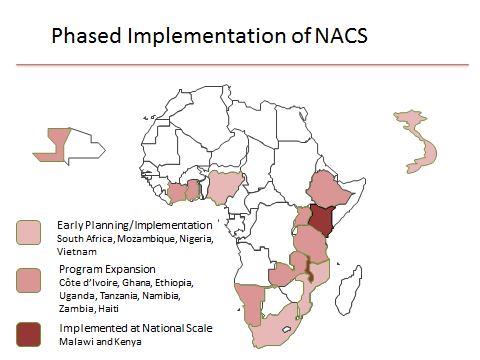
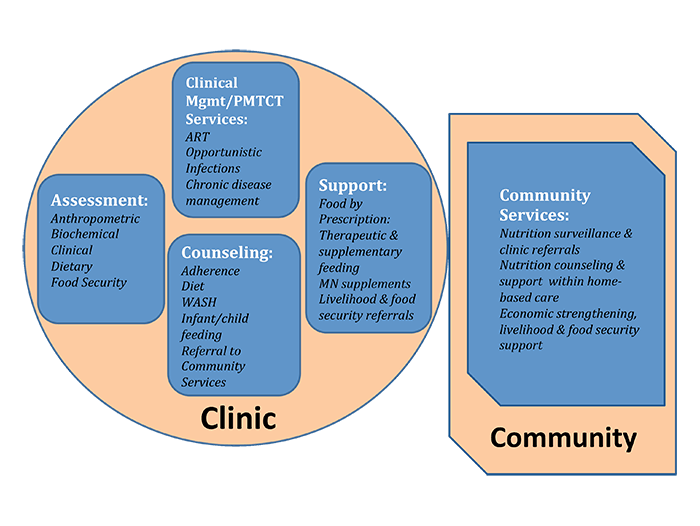
Comment
Make a general inquiry or suggest an improvement.